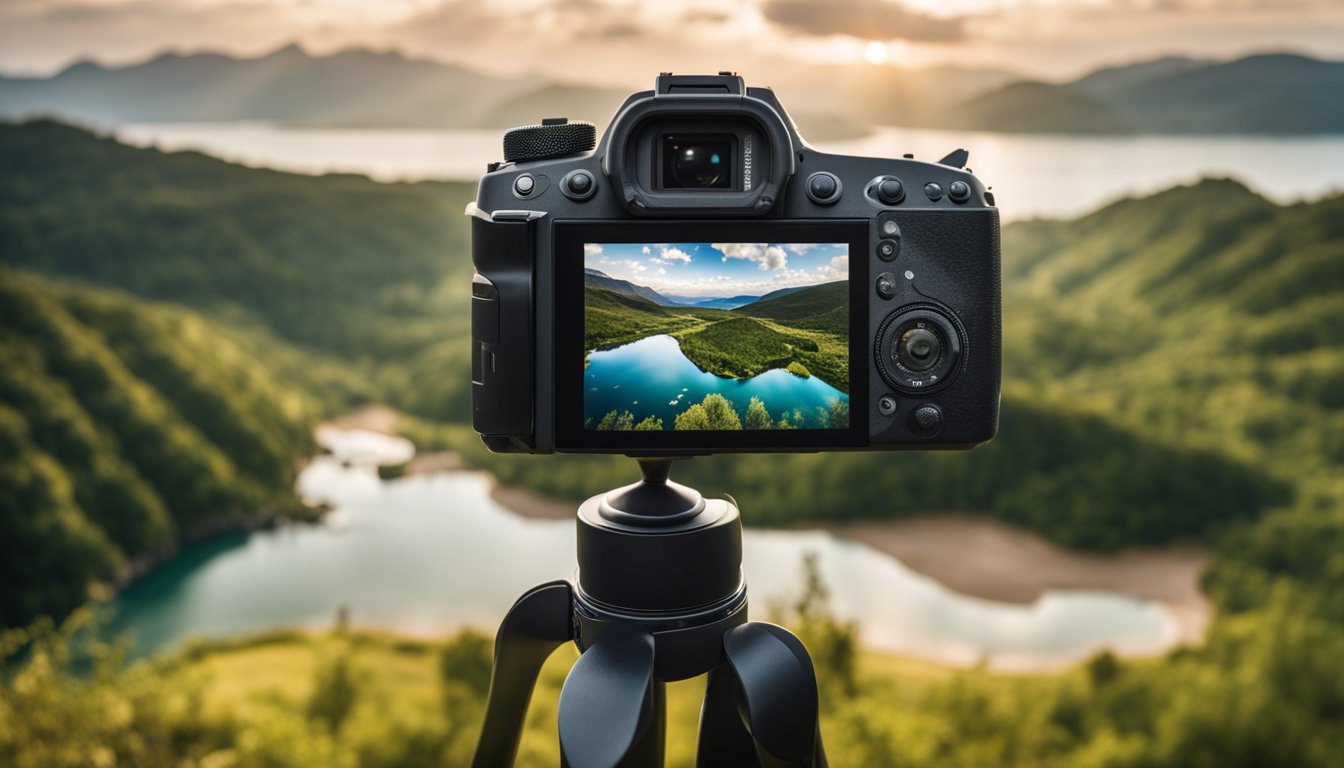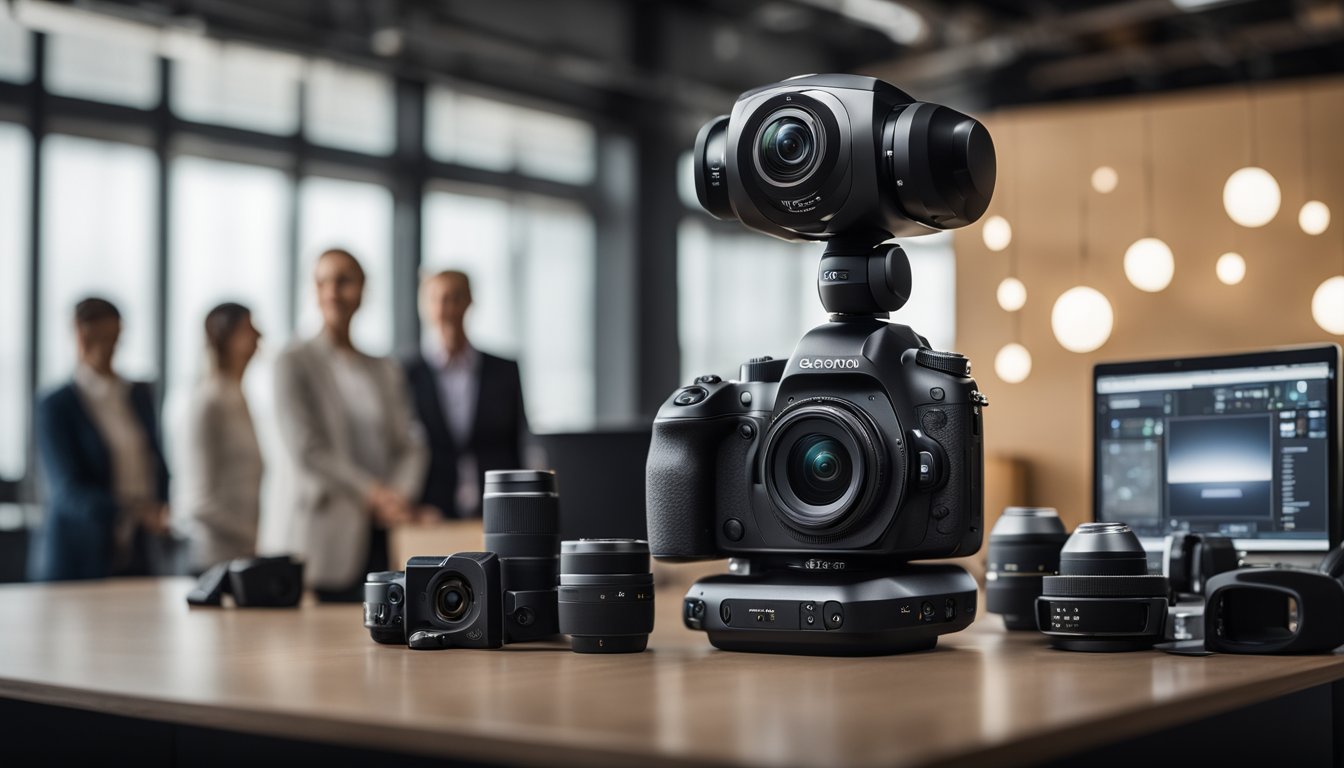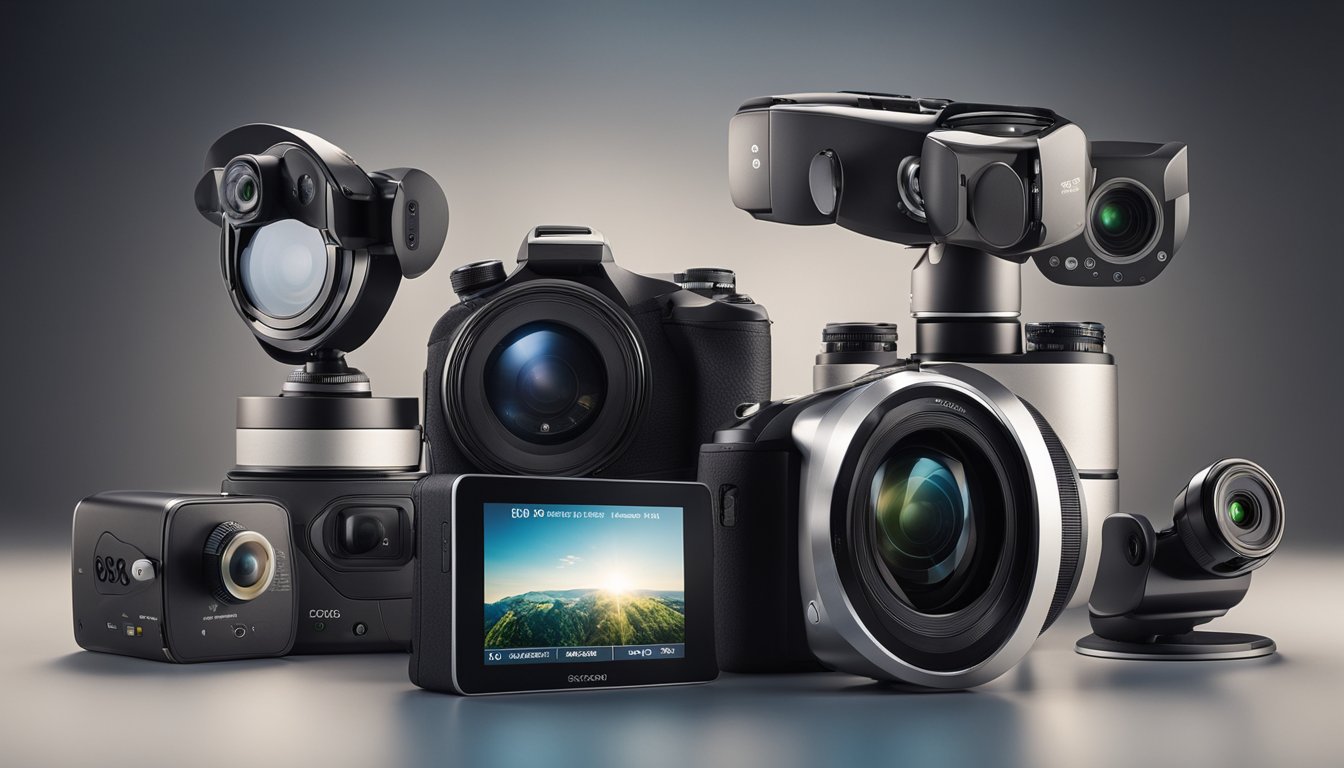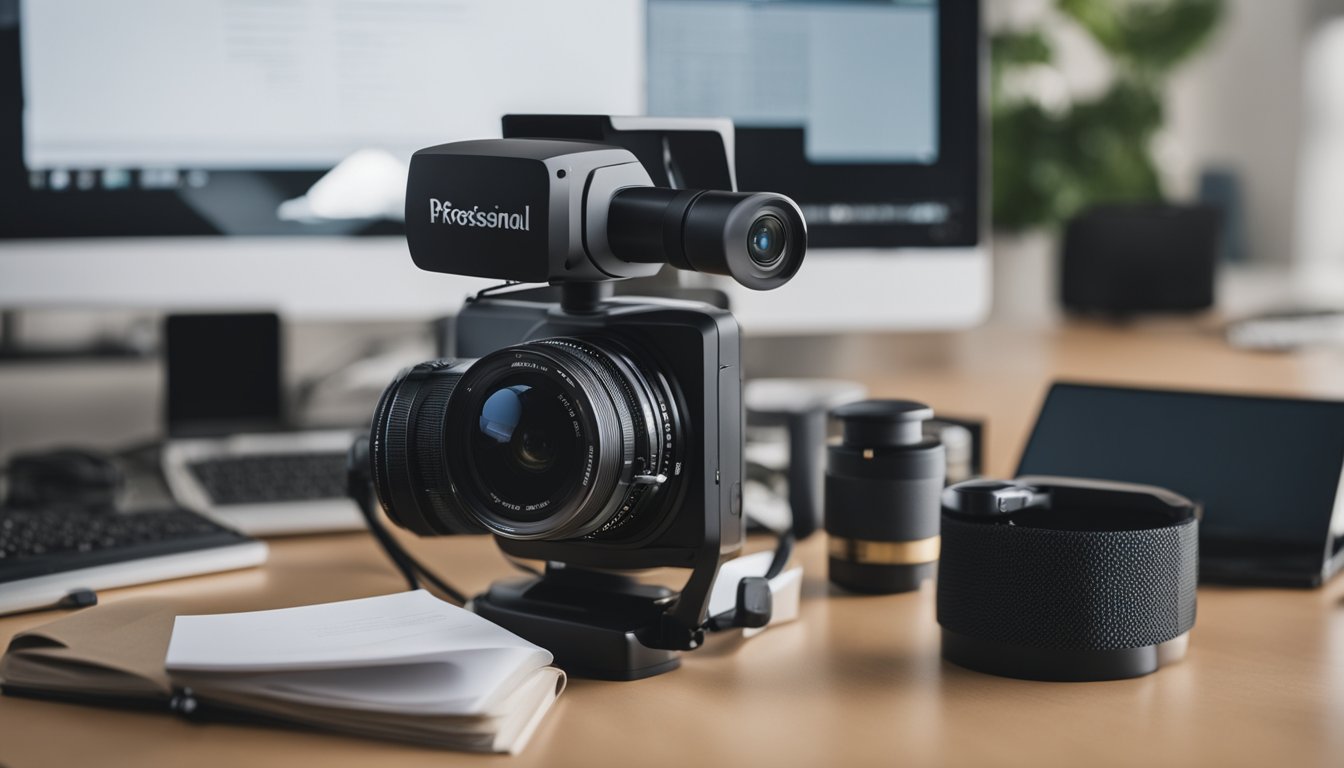The Pano View 360 camera is quickly becoming a favored tool for those looking to capture moments in a dynamic and immersive format. Unlike traditional cameras, this device utilizes dual wide-angle lenses to stitch together a full 360-degree perspective, offering a unique way to preserve memories and experiences. Whether it’s for professional use or personal enjoyment, the 360-degree camera market has shown significant growth, and the Pano View is a product that embodies this innovative trend.

From its straightforward controls to its compatibility with various accessories, the Pano View 360 camera is designed to be user-friendly without compromising on quality. It caters to the needs of users who demand high-resolution imagery and seamless video integration. Understanding how to leverage its capabilities, such as connectivity options and software features, can transform the way you share and publish content. Moreover, knowing the right techniques for 360-degree photography and videography is crucial to making the most out of this camera.
Key Takeaways
- The Pano View 360 camera offers a complete surround view to capture experiences vividly.
- It is designed to be accessible to users while maintaining high standards for image and video quality.
- Effective use of the camera’s features enhances content sharing and the creation of virtual tours.
Overview of 360-Degree Cameras
In your exploration of photography and videography, you’ve likely encountered the innovative world of 360-degree cameras. These devices bring a unique spherical perspective to your captures, allowing you to immerse yourself and others in scenes like never before.
Design Features
Your pano view 360 camera is a marvel of modern design, combining the expansive capabilities of a 360-degree camera with the ease of use expected from a compact camera. Unlike a traditional mirrorless camera, which captures the world from one direction, these cameras are equipped with lenses on both the front and back. This design allows them to seamlessly stitch together a full panoramic view, creating an interactive experience that puts you at the center of it all. They are often surprisingly portable, meant to go wherever your adventures take you, with intuitive controls that make capturing your world in 360 degrees as simple as a click.
360-Degree Perspective
When you hold a pano view 360 camera, you’re holding the key to a whole new visual experience. The term “360-degree” refers to the camera’s ability to capture a complete view of the surroundings—every angle, nook, and cranny, laid out in a spherical panorama. This isn’t just a wide-angle view; it’s a full, wraparound image that lets you revisit moments in time, look around corners, and even turn the sky and ground into part of your visual playground. It’s like stepping into a memory or a scene from your favorite film, with the ability to look in any direction you choose.
Evaluating Image and Video Quality
When you’re assessing a panorama view 360 camera, the image and video quality are paramount. The camera’s ability to capture crisp, stable footage with well-balanced exposure determines much of its value.

Resolution and Image Clarity
Your panoramic camera should have a high video resolution for the best image clarity. Options like 4K and 5.7K resolutions provide you with exceptionally detailed images, making the most of the immersive 360-degree view. Some cameras even offer 8K resolution, which is beneficial for professional-grade projects where image quality cannot be compromised.
Stabilization and Exposure Control
Image stabilization is essential for smooth, clear footage, especially when capturing dynamic scenes or using the camera on-the-go. Look for features like active HDR which means High Dynamic Range, to ensure your camera effectively balances light and dark areas, preventing over or underexposed shots. HDR mode and auto exposure work together to optimize your images and videos for the best visual experience.
Understanding Camera Sensors
When you’re exploring 360 cameras like the Pano View 360, it’s vital to understand how camera sensors influence the image quality and performance. Below are key insights on the fisheye and CMOS sensors and their low-light performance.
Fisheye and CMOS Sensors
The Pano View 360 camera utilizes a fisheye lens paired with a CMOS sensor. This combination allows for a wide-angle view, capturing expansive 360-degree images with a single lens. The fisheye lens creates a strong visual distortion, which is necessary to achieve this panoramic effect. The CMOS sensor, an electronic chip that converts photons to electrons for digital processing, is responsible for capturing the light information from the lens. It’s the CMOS sensor’s job to convert this information into a digital image that you can view, edit, or share.
Low-Light Performance
Your 360 camera’s prowess in dim settings hinges on its low-light performance. Thanks to the advancement in sensor technology, CMOS sensors have greatly improved in terms of sensitivity. This means even in situations where lighting is less than ideal, the sensor can still capture a clearer image with less noise. However, in extremely low-light conditions, images may still appear grainy. The Pano View 360’s CMOS sensor is designed to maximize light collection, allowing for better performance when you’re capturing moments in darker environments.
In-Depth Camera Specification Analysis
Before diving into the specifics, it’s essential for you to understand the critical components that make the PanoView 360 Camera stand out: its aperture and shutter speed capabilities and the impressive field of view complemented by its dynamic range.

Aperture and Shutter Speed
« 360 Cameras for Parties: Capture Every Angle of Your Fun Event!
Best 360 Cameras for iPhone: Capture Your World in Stunning Detail »
The aperture of a camera dictates the amount of light that reaches the sensor. Your PanoView 360 Camera boasts a high-definition 8-megapixel HD camera which, according to the Pano View 360 Camera Review (2023), ensures well-lit images, especially in outdoor settings. The camera’s quick shutter speed enables you to capture sharp images with minimal blur, especially advantageous for fast-moving scenes.
Field of View and Dynamic Range
With seamless panoramic photo stitching, the PanoView 360 Camera provides you with an extensive field of view, which is essential for immersive 360-degree photography and videography. The camera’s dynamic range is critical in capturing detail in both the highlights and shadows, giving your images a lifelike quality that can cope with various lighting conditions.
Camera Connectivity and Control
In today’s connected world, you want a 360 camera that seamlessly integrates with your devices and offers easy control options. The Pano View 360 camera steps up to this challenge by providing robust connectivity and straightforward remote control features.
Wi-Fi and Smart Device Integration
Your Pano View 360 camera isn’t shy when it comes to connecting with your smart devices. Equipped with built-in Wi-Fi, it allows you to link up with a mobile app on your smartphone or tablet. Once connected, you can transfer your panoramic shots directly to your device. This Wi-Fi functionality transforms your mobile gadget into a live viewfinder, and you can tweak settings or trigger the shutter from anywhere within range.
- Wi-Fi Connectivity Details:
- Built-in functionality for easy pairing
- Compatible with various smart devices
- Offers remote live viewing and settings adjustment
Remote Control Options
Controlling your Pano View 360 camera is intuitive and adaptable. Beyond the camera’s own controls, like the LCD screen and multiple control buttons, you have the option to manage it using a separate remote. Whether you’re aiming to take shots from a distance or you just prefer the tactile feel of a remote, the choices at your disposal make operations a breeze.
- Control Features:
- Integrated LCD screen for on-device control
- External remote control for convenience
- Customizable settings via connected smart devices
Software and Processing Capabilities
In the realm of 360 photography, your camera’s software and processing capabilities are paramount. They dictate how well your camera performs from capturing the shot to producing the final panoramic image.
Firmware Updates and Camera Modules
Updating your firmware is crucial for maintaining your camera’s optimal performance. Manufacturers periodically release updates that enhance features and fix bugs. For instance, new firmware updates can improve the way your camera modules work together, ensuring that you’re getting the best image quality and functionality out of your panoramic captures.
Stitching and Editing Software
Once you’ve captured your 360-degree content, stitching software becomes your best ally. Efficient stitching software should seamlessly blend the images captured by the different camera modules. Consider tools like CloudPano, which offer robust solutions for not just stitching, but also for editing and enhancing your photos. Good stitching software is also essential in reducing the time you spend in post-processing, so you can focus more on capturing breathtaking panoramas.
Different Camera Models and Brands
In the realm of 360° photography and videography, you’ll encounter a variety of models that cater to different needs. From the action-packed lifestyle vlogger to the professional seeking impeccable detail, here’s a closer look at the options you have.
Insta360 Family
The Insta360 brand has covered substantial ground with their diverse lineup. The Insta360 ONE R is versatile due to its interchangeable lens design. Moving on, the Insta360 X3 brings significant improvements in stabilization and image quality, which is critical for capturing dynamic scenes flawlessly. If you’re looking for a model that balances power and flexibility, the Insta360 ONE RS introduces a boosted sensor size leading to higher quality images and more detailed video.
GoPro and Ricoh Offerings
When it comes to durable and user-friendly 360 cameras, GoPro Max is a name that resonates with many. With features both easy for beginners and suitable for intense action shots, GoPro secures its place firmly in your arsenal. Meanwhile, Ricoh has carved out its niche through the Ricoh Theta line. The Ricoh Theta Z1 stands out for its superior low-light performance and raw shooting capability, appealing particularly to professionals who require that extra edge in image quality.
Accessory Compatibility and Options

When you dive into the world of the Pano View 360 Camera, you’ll find a variety of accessories that can enhance your photography and video-taking experience. From taking on the depths of the ocean to expanding your camera’s capabilities, let’s look at the specifics.
Waterproof Housing and Mounts
Your camera can brave the underwater world with a waterproof case that’s equipped to handle depths of up to 30 meters. This means you can safely capture stunning aquatic scenes without worry. Plus, with a selection of mounts, you can secure your camera to nearly anything—think surfboards, helmets, or even your own selfie stick—for that perfect angled shot.
- Waterproof Rating: Up to 30 meters
- Compatible Mounts:
- Surfboard mount
- Helmet mount
- Selfie stick
- And more…
Camera Expansion Packs
If you’re looking to get more from your Pano View 360 Camera, consider grabbing a camera pack. These packs can include additional batteries, a variety of lenses, or even specialized software to take your camera’s functionality to the next level. It’s all about getting those high-quality shots with added convenience and versatility.
- Expansion Pack Contents:
- Extra batteries
- Lens options
- Software enhancements
Sharing and Publishing Content
Sharing your 360 content has never become easier with the Pano View 360 camera. You can swiftly upload your immersive images and videos to various platforms and even engage with your audience in real-time through live streaming.
Direct Upload to Platforms
Once you’ve captured your panoramic content, you have the option to upload it directly to popular social media platforms. The Pano View 360 camera simplifies the process by allowing you to post your memories with ease. For instance, you can directly share your 360 photos and videos to Facebook or YouTube without the hassle of transferring files to your computer first. This seamless integration means your adventures are just a click away from your friends and followers.
- Facebook: Supports direct 360 photo/video uploads.
- YouTube: Accepts 360 video content for a VR-like experience.
By using the camera’s available app or web interface, you maintain the quality of your content while the camera’s software communicates with the servers of these platforms, ensuring a smooth upload process.
Live Streaming Capabilities
Your Pano View 360 camera isn’t just for capturing moments; it’s also your gateway to sharing experiences live. The camera’s live stream feature enables you to broadcast in 360 degrees directly to compatible platforms.
- Facebook Live: Engage with your audience in an immersive live session.
- YouTube Live: Stream live content, providing viewers a spherical view experience.
When live streaming, ensure you have a stable internet connection to prevent interruptions. The simplicity provides you with more time to interact and less to worry about technical difficulties. You’re not just sharing content; you’re inviting viewers into your world as it unfolds.
Using 360 Cameras for Virtual Tours
Creating virtual tours has never been easier, thanks to 360 cameras. Unlike traditional cameras, a panorama camera captures every angle in a single shot, giving viewers a complete and immersive experience.
When you’re looking for a travel camera that’s efficient and effective, 360 cameras are a superb choice. They capture high-resolution, sharp, and well-exposed images, allowing your virtual tour to feel engaging and realistic. The right 360 camera turns virtual tours into a showcase of picture-perfect panoramas.
Here’s what you need to consider:
-
Image Quality: Opt for cameras that provide crisp and clear imagery. Remember, the goal is to make your viewer feel as though they’re actually there.
-
Ease of Use: Aim for cameras that are intuitive—simplicity means faster shooting and less time troubleshooting on location.
-
Stitching Software Compatibility: Ensure your camera is compatible with quality stitching software to create seamless panoramas.
Quick Checklist for 360 Cameras
- High resolution and image quality for lifelike visuals
- User-friendly interface
- Reliable stitching software compatibility
- Portability for ease of travel
By choosing the right equipment, you’re not just capturing a space; you’re bringing it to life for your audience. Whether it’s for real estate, tourism, or event planning, 360 cameras are a game-changer in crafting virtual tours that are as close to reality as it gets.
Tips for 360-Degree Photography and Videography
When diving into the world of 360-degree cameras, first consider your choice of equipment. Cameras like the GoPro Fusion and Ricoh Theta V offer a user-friendly introduction to capturing sprawling scenes.
For photography enthusiasts eager to capture high-quality 360 photos, using a tripod is a game-changer. It stabilizes your camera, giving you sharper images and consistent horizons. Your 360-degree panoramas will look professional, with less distortion and blurring.
When shooting 360 videos, pay special attention to lighting. Inconsistent lighting across the scene can lead to uneven video quality, so focus on creating a seamless look. To avoid visible stitching errors, maintain the same exposure and white balance across all lenses.
Here’s a quick list to reference before your next 360-degree shoot:
- Choose the right equipment for your skill level
- Use a tripod for stability
- Check lighting for a consistent appearance
- Test your exposure and white balance settings
- Clear the area around your camera to avoid unwanted objects in your footage
Remember, your presence can affect the footage, too. If you’re aiming for an immersive experience, either find a good spot to hide or become part of the scene. Also, inspect your camera’s surrounding area; you don’t want to discover later that your perfect shot was photobombed by a random object.
Keep these tips in mind, and you’ll be well on your way to mastering the exciting world of 360-degree content creation. Happy shooting!
Frequently Asked Questions

In this section, you’ll find concise answers to some of the most common queries regarding the Pano View 360 camera, helping you to understand its features and how it stacks up in the evolving world of photography.
How do 360 cameras compare to traditional cameras?
360 cameras offer a different experience by capturing immersive, spherical footage that traditional cameras can’t. You can capture an entire environment in one shot, providing a more comprehensive view.
What are the best features to consider in a 360 camera for panoramic shots?
When looking for a 360 camera, prioritize resolution, stitching capabilities for seamless panoramic photos, and features like a high-definition lens for clear images. Opt for cameras that also offer a durable build and water resistance if you’re shooting outdoors.
Which 360 camera is currently the best on the market?
While ‘the best’ can vary based on user needs, models like the Pano View 360 camera have been noted for their high-definition clarity and seamless stitching, making them strong contenders.
Are there any affordable yet high-quality 360 cameras available?
Yes, it’s possible to find 360 cameras that are both affordable and high-quality. For instance, newer versions of the Pano View 360 camera have become available at lower prices than before, without compromising significantly on quality.
How user-friendly are the apps that accompany 360 cameras?
Most 360 camera apps are designed to be user-friendly, allowing easy control over the camera functions and facilitating the editing and sharing of 360-degree content right from your smartphone.
Can you create VR content with a 360 camera?
Absolutely, you can create VR content with a 360 camera. These cameras are designed to capture all angles of a scene, which is essential for creating immersive VR experiences.







